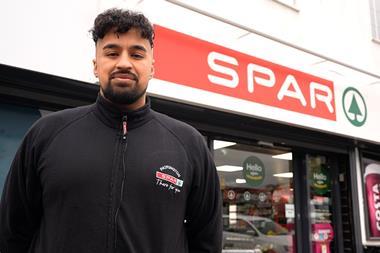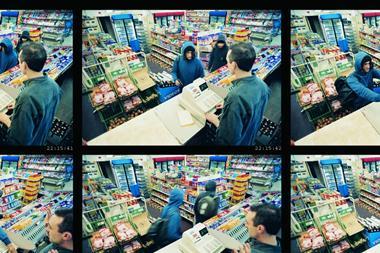Singh’s Premier, Sheffield
Mandeep took home the title of Best Small Store at the 2011 Convenience Retail Awards for his Herries Road outlet, which still performs well despite competition from two Tesco stores
Londis News R Us, Derby
As one of a group of retailers who laid the foundations for the hugely successful My Shop Is Your Shop campaign, Dee knows that community involvement is key for convenience stores
Holburn’s, Redhill, Surrey
Always open to new ideas, Dean is currently overhauling his refrigeration systems in order to make his stores more energy efficient and reduce the amount he has to pay in electricity charges
James Graven, Cambridge and Norfolk
In addition to his six thriving c-stores, community-focused Jonathan has just opened a mini 100sq ft store inside an old people’s home, largely as a gesture of goodwill
Mandeep: Our Manor Estate and Teynham Road sites are both in housing estates so many of the customers are local residents, whereas our Herries Road site is on a main road so the customer base is more mixed.
Dee: I have a housing estate store in Matlock where people just come in, buy what they want and leave. And I have a village store in Etwall where customers are very high maintenance and have a lot of time on their hands they’ll complain if there’s so much as a typo in their newspaper!
Dean: My two stores are only five miles apart, but the Redhill one is a busy neighbourhood shop, whereas the other in South Nutfield is in a rural area. The demographics vary a lot between both. South Nutfield is generally an area with lots of elderly people, but there’s a primary school there, too. The neighbourhood store is in an affordable housing area. It’s more densely populated and there’s a younger customer base.
Jonathan: I have two Budgens supermarkets one is in the centre of the busy market town of Soham with a good mix of customers who are predominantly older. The other is in Dersingham, a village of retired people in Norfolk. I also own a Spar forecourt, West Park, in the market town of Chatteris, where 80% of the customers come for the store, rather than fuel; and another, Slade End, situated in the same town, but on a busy roundabout, which attracts both transient and neighbourhood customers. I have a Budgens forecourt in Ely, also situated by a roundabout, with transient customers, and a Spar forecourt in Littleport. It, too, has a transient customer base.
Dee: I’d look at any opportunity, but ideally I’d like a 2,500sq ft store, to give me something to play with. I wouldn’t buy another village store.
Dean: I’m not looking at other stores I’m currently adapting my existing store. I’m looking to expand my Redhill store by 500sq ft.
Jonathan: We specialise in neighbourhood stores. If we were to add another store we’d want one in a close-knit community that we could engage with. How do your stores differ in terms of size and layout?
Mandeep: Herries Road is L-shaped and measures 950sq ft, while Manor Estate is 1,600sq ft and square shaped, as is Teynham Road, which measures 1,700sq ft. They are all quite impulse-based in design with promotional bays at the ends of the aisles.
Dee: Both stores are 1,000sq ft, but Matlock is long and thin, whereas Etwall is much more spacious as it was a new build and we designed it in a square shape from the start.
Dean: My two stores are very similar and both measure 1,000sq ft. However, the rural store has a post office, while the neighbourhood store carries more alcohol.
Jonathan: The two larger supermarkets are 7,500sq ft. They’re big on fresh in the first aisle, grocery in the body, and beers, wines, spirits and carbonates around the edge.
Fresh and chilled make up 40% of sales in these stores and the Soham supermarket has just launched an in-store butchery.
Littleport is 1,450sq ft and the layout makes the most of the transient and neighbourhood customer base, with beers, wines and spirits and fresh and chilled around the edge and grocery making up the body.
Ely is 1,800sq ft with a similar layout to Littleport maximising on impulse in the first aisle, with the rest of the store dedicated to grocery. Both stores also have a Country Choice hot food offering, which makes up 10% of total sales at each unit.
Spar Slade End is 600sq ft with a transient customer offering of cigarettes, soft drinks, confectionery and alcohol.
Spar West Park measures 1,700sq ft and is laid out to meet the needs of its neighbourhood customers.
Mandeep: Teynham Road’s turnover is 50% more than Herries Road, and Manor Estate is somewhere in the middle. Manor Estate’s sales would be higher, but it has more competition than the others.
Dee: Matlock turns over £8-10 per sq ft, while Etwall does £6 per sq ft. It’s hand to mouth for many people living on housing estates, whereas village shoppers plan more and make more trips to the supermarkets.
Dean: The Redhill store is 25% busier than South Nutfield.
Jonathan: In turnover terms, the 600sq ft store is doing about as much as the 1,700sq ft store but that’s mainly because we’re selling a lot of cigarettes there, and that’s not necessarily a great place to be.
Mandeep: Euroshopper Energy Drink is our bestseller in all three stores, but sales vary on other products. For example, our Teynham Road store sells lots of Webbox dog food. There are allotments nearby where people take their dogs, so that could be the reason why.
Dee: I sell more wine in the village store, but more alcohol in general in the housing estate store. I can’t sell sandwiches for love or money in Matlock all people want is cobs (rolls).
Dean: Fruit & veg and grocery are stronger in the rural store as customers who live there have further to go to get to a supermarket.
Jonathan: Sandwiches tend to be big at the transient stores, while fresh produce is big at the supermarket formats.
Mandeep: We do £1 offers and ‘three wines for £12’ in all our stores, and they all perform well.
Dee: I’d say impulse promotions work better in Etwall, whereas grocery promotions are more effective in Matlock. About 70% of sales in Matlock are promotion-based, versus 20% of those in Etwall.
Dean: The neighbourhood store is better on snacking, soft drinks and alcohol promotions and the rural shop has more grocery deals.
Jonathan: There are lots of promotions across every category in the supermarkets, whereas in the forecourts there are just one or two per category. The forecourt promotions are based around drinks and impulse deals, such as a Danish pastry and a coffee for a set amount. The supermarket promotions are based around key brands. We’ll also do three different sorts of meats for £10.
Dee: Londis helps to a degree, but to be honest I know what’s best for my customers.
Dean: We carry our own branding, but we’re Mace affiliated, so we run their promotions on a regular cycle.
Jonathan: Spar is extremely good at transient formats and they’ve come up with a neighbourhood format, too. We look at that every 12 weeks with Spar in terms of what works and what doesn’t. With the other stores, Budgens gave us a supermarket feel and at the time when we chose them they were very strong in fresh, although Spar is now good in this area, too. How do you handle staffing across your various stores?
Mandeep: We have more staff in the Herries Road store because they open up in the mornings, whereas the other stores are opened up by family members. We need staff for an extra hour in the evenings at Teynham Road as it is open later than the others because it’s the busiest store.
Dee: Matlock has three more staff than Etwall because it’s a busier store.
Dean: The Redhill store is open longer and requires heavier staffing and more part-timers. Some staff work across both stores if needed. The rural store has older staff who have been there since we bought it and are well-known to the customers.
Jonathan: We’ve got a lot more part-time staff in the supermarkets working three- or four-hour shifts. At the forecourts we have part-time staff on the fresh and chilled and hot food sections, and full-time people on the tills and customer service. We move staff between the forecourts when we need sickness and holiday cover.
What are the main pros and cons of a small c-store?
Mandeep: Small stores are easier to manage and you don’t have to carry as much stock. The disadvantages are that you don’t necessarily have parking spaces, plus it’s easier to run out of stock and so your staff have to work extra hard to keep replenishing the shelves.
Dee: Smaller stores can be restrictive in terms of what you are offering, but they are much cheaper to run.
Dean: The pros are that if you’re paying rent or rates then a smaller store’s costs aren’t as high. But the downside is that you’re always fighting for a bitof extra room.
Jonathan: Small stores have availability advantages in so much as there is less to manage, but the cons are that they have a smaller range and also that customers have a tighter space in which to shop, which doesn’t necessarily make for a nice ambience.
Mandeep: A key benefit is that you can carry more stock, and when the store gets busy there is space for people to queue without it feeling crowded. But the downside of big stores is that they are often targeted by the supermarkets.
Dee: You can be more experimental with a big store, but they are more costly to operate.
Dean: One disadvantage is that you have bigger stock holding, but an advantage is that you can merchandise your goods better when you have more space.
Jonathan: You get a bigger range and a far nicer ambience with a larger store. Also, if you want to get involved in any events, such as product sampling, you have enough room to hold them in-store. Availability can be problematic because there’s more to keep on top of. Pricing can also be difficult because with a small store people expect to pay a little more, but with a bigger shop they want supermarket prices.

























No comments yet